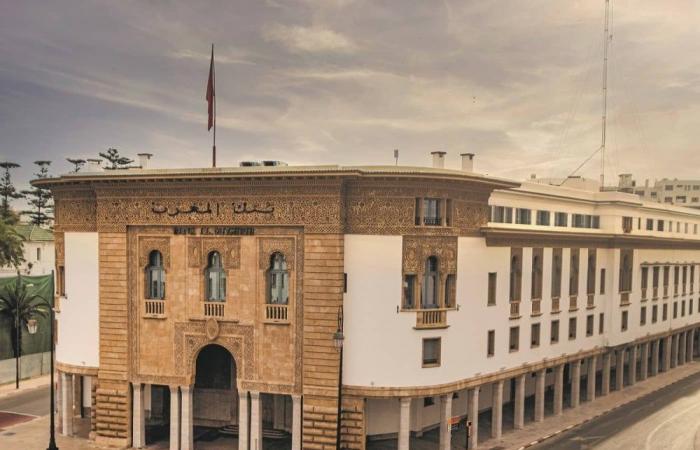At the international level, the Council noted the relative resilience of economic activity and the decline in inflationary pressures which should continue, although at a slower pace than expected last March. However, these prospects remain surrounded by a high level of uncertainty, particularly linked to the persistence of geopolitical tensions and conflicts in Ukraine and the Middle East.
At the internal level, the annual national accounts published by the HCP for 2023 indicate, compared to quarterly data relating to the same year, a faster pace of non-agricultural activities as well as a clear improvement in household consumption. Taking into account the available sub-annual indicators, this information suggests a relatively higher trajectory for non-agricultural growth which should be supported in the medium term particularly by the expected momentum from public and private investment.
Regarding thedomestic inflation, after rates of 6.6% in 2022 and 6.1% in 2023, it has returned to low rates in recent months, mainly driven by the easing of external pressures and the fall in product prices food at volatile prices. Taking into account these achievements and the resumption of the decompensation process, it should end the current year with an average rate of 1.5% and rise to 2.7% in 2025. Its underlying component, which reflects the fundamental price trend, stood at 2.1% on average over the first five months of the year and should remain close to this level by the end of 2025.
The Council also took note of the good anchoring of inflation expectations as revealed by the quarterly survey of Bank Al-Maghrib from experts in financial sector. These recorded a significant decline, falling in the second quarter of the year to 2.7% for the 8-quarter horizon and to 2.8% for the 12-quarter horizon.
As for the transmission of previous monetary policy decisions to financial conditions, the lending rates of banks remained almost stable for the second consecutive quarter, their cumulative increase between the start of monetary tightening in September 2022 and the first quarter of 2024 thus standing at 116 bp. The increase in rates affected businesses more than individuals and was less significant for TPME than for large companies.
Here are the updated macroeconomic forecasts of BAM.
Export growth in 2024 and 2025
In terms of external accounts, after virtual stagnation in 2023, exports of goods should improve by 4.4% in 2024 and 8.9% in 2025, driven mainly by sales of automotive industry and of phosphates and derivatives which would respectively reach 185.1 billion and 88.5 billion dirhams in 2025. At the same time, and after a decline of 2.9% in 2023, imports would increase by 6.1% then by 9.7%, in line with particularly with an increase in acquisitions of capital and consumer goods, while the energy bill should see a reduction this year, followed by an increase of almost 5% in 2025 to 125.1 billion dirhams. For their part, travel receipts should continue their performance with annual increases of 5.8% to stand at 117.2 billion in 2025. Likewise, the available data suggests a continuation of the upward trend in transfers from MRE, with improvements of 1.9% this year and 5.3% in 2025 to 123.7 billion dirhams. Under these conditions, and after an exceptional reduction to 0.6% of GDP in 2023, the current account deficit would be around 1.7% of GDP in 2024 and 2.7% in 2025. Furthermore, FDI receipts, after a relatively low level in 2023 equivalent to 2.4% of GDP, would strengthen to nearly 3.1% of GDP in 2024 and 2025. Ultimately, and taking into account forecast external financing from the Treasury, official reserve assets would continue to strengthen to reach 382 billion dirhams at the end of 2024 and 395.6 billion at the end of 2025, thus representing coverage of around 5 and a half months of imports of goods and services.
Banks’ need for liquidity should ease in 2024
As for the monetary conditionsthe need for bank liquidity is expected to ease slightly, falling from 111.4 billion at the end of 2023 to 109.8 billion dirhams at the end of 2024, before widening to 133.6 billion at the end of 2025, driven mainly by the planned expansion of fiat currency . Taking into account these developments, forecasts of non-agricultural growth and expectations of the banking system, the growth of credit to the non-financial sector should accelerate from 2.7% in 2023 to 4.4% in 2024 and at 5, 2% in 2025. Regarding the real effective exchange rate, considering the inflation differential with the main trading partners and competitors and its increase in nominal terms, it should continue its slight appreciation at rates of 0.5% in 2024 and 0.2% in 2025 after 0.8% in 2023.
Stability of the budget deficit
In terms of public finances, budget execution for the first five months of 2024 shows an improvement of 10.8% in ordinary revenues driven by the increase in tax revenues. At the same time, overall spending increased by 1.2%, driven by spending on goods and services, while compensation charges and investment spending fell. In view of these achievements, the opening of additional credits under the general budget in the amount of 14 billion dirhams, almost half of which devoted to salary increases decided within the framework of social dialogue, as well as the updating its macroeconomic projections, Bank Al-Maghrib expects a stability of the budget deficit at 4.4% of GDP this year and its reduction to 4.1% in 2025.






